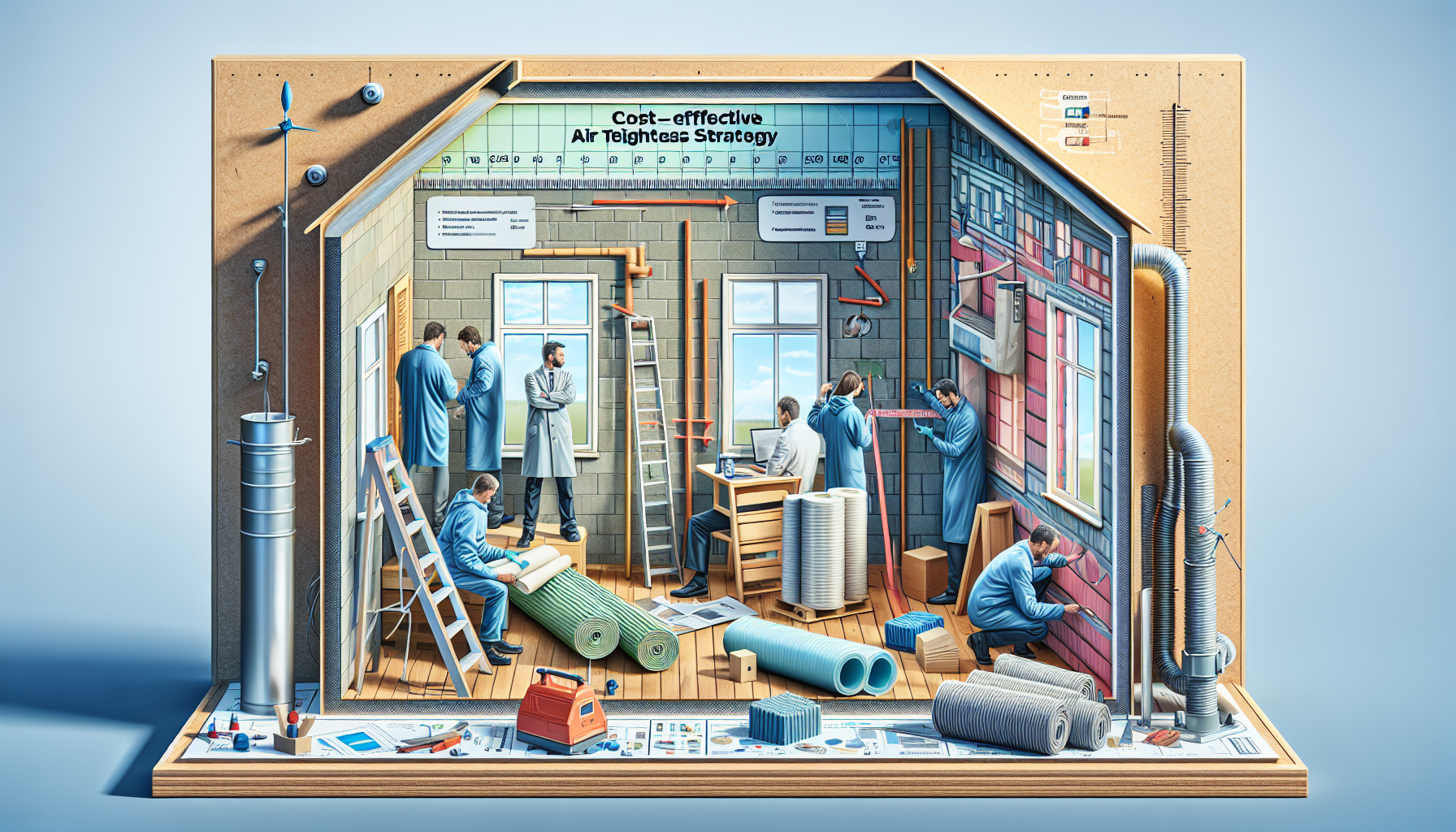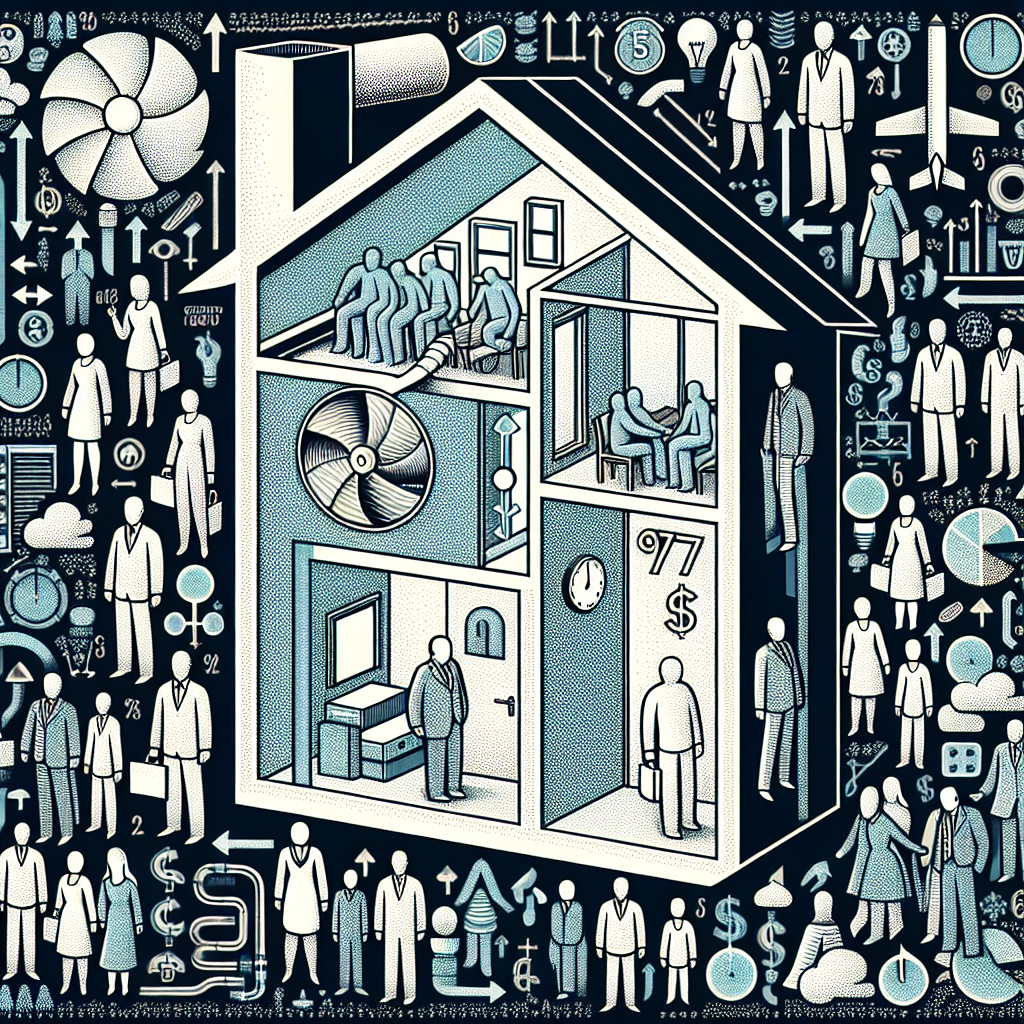Creating a Cost-Effective Air Tightness Strategy for Buildings
In the quest for sustainable living and energy-efficient buildings, an effective air-tightness strategy stands out as a crucial element. Achieving airtightness enhances a building’s energy efficiency, comfort, and overall cost savings. At Ratio Seven, we specialise in helping homeowners and builders fine-tune their approach towards achieving this goal. This article explores the essential steps and considerations for creating a cost-effective airtightness strategy that not only saves money but also improves the living conditions within a building.
Identifying and Sealing the Building Envelope
A building’s thermal boundary, or envelope, is where the air barrier should be established. Identifying this boundary and ensuring it is continuous is the first and foundational step in your airtightness strategy. Establishing this envelope involves leveraging existing materials such as exterior sheathing or internal drywall, while bridging any gaps between them. There are various strategies and materials available, including:
- Air-Tight Drywall (ADA): This method involves using drywall as an air barrier by sealing seams and joints diligently.
- Adhesive Attachment: Using specific adhesives to connect the structural framing to sheathing can ensure a stronger barrier.
- Proprietary Systems: Technologies like SIGA membranes and the ZIP System provide promising results for air-tightening.
- Innovative Techniques: Aerobarrier, a newer technology, is gaining traction for its capability to deliver significant air sealing results efficiently.
Each of these approaches has its costs and benefits, and selecting the appropriate strategy is crucial for balancing effectiveness and budget.
Selecting the Right Materials and Techniques
When developing a cost-effective air tightness strategy, it’s essential to choose materials and techniques that offer the best value for money. Here are key methods you might consider:
- Caulking and Weatherstripping: These cost-effective measures are ideal for sealing smaller cracks and openings around doors, windows, and other movable components.
- Spray Foam: Useful for larger gaps, particularly in harder-to-reach areas like attics and crawl spaces. It’s effective in sealing joints and cracks that are larger than what caulking can address.
By combining these simple methods, you can achieve substantial improvements in your building’s airtightness without incurring excessive costs.
Key Areas to Focus On
Successful air tightness strategies require attention to particular areas within a building where air leakage is more prevalent. Here are some hotspots to focus on:
- Attic Sealing: Apply spray foam to cover larger gaps and use caulking for smaller cracks around penetrations such as plumbing stacks and chimneys. Weatherstripping around attic hatches can significantly reduce heat loss.
- Wall Sealing: Prioritise sealing around windows, doors, and electrical outlets using foam or caulk. Weatherstripping to seal gaps in door thresholds is also effective.
- Crawl Space and Basement Sealing: Ensure to install vapour barriers to mitigate moisture intrusion and seal any gaps around pipes, ducts, and foundation walls.
Combining Air Sealing with Insulation
Air sealing and insulation collaborate to form a robust thermal barrier. Addressing air leaks ensures that insulation can perform at its maximum potential. This powerful combination can reduce energy bills by up to 30% while alleviating pressure on HVAC systems, consequently extending their lifespan. The approach not only improves comfort but does so at a reduced operational cost by maintaining stable indoor temperatures.
Diagnostic Tools and Professional Assessment
Utilising advanced diagnostic tools is imperative for identifying elusive air leaks, particularly in inaccessible areas. Some tools and methods include:
- Blower Door Tests: These tests help measure the air tightness of your building and reveal locations of air leaks.
- Thermal Imaging: Efficient in detecting temperature variations that may indicate the presence of air leaks.
Engaging professionals, such as those from Ratio Seven, can provide detailed assessments and bespoke recommendations for achieving the desired level of airtightness.
Economic and Practical Implications
Enhancing a building’s airtightness delivers significant economic benefits. Reduced energy bills are the most immediate advantage as better airtightness means less energy is required for heating and cooling. Furthermore, your building may require smaller, less expensive HVAC systems due to lower energy demand. Despite initial costs for air sealing and insulation, these enhancements lead to substantial long-term savings. Buildings not aligning with regulatory air tightness standards can consume up to 45% more energy, highlighting the absolute necessity of implementing these strategies.
Achieving Sustainability
Improving airtightness contributes significantly to sustainability, correlating with less energy consumption and a reduced carbon footprint. By aligning with green building certifications, such strategies add notable financial and environmental value to properties. Undertaking these measures with the support of companies like Ratio Seven ensures alignment with the latest sustainability goals, offering long-lasting benefits for both the environment and building occupants.
Steps for Homeowners
Homeowners aiming to improve their building’s airtightness can embark on several practical steps, such as:
- Sealing all gaps and cracks within the building’s envelope to enhance energy conservation.
- Implementing weatherstripping around doors and windows to curb air leaks effectively.
- Applying caulking meticulously to seal seams and joints throughout the home.
- Adding or upgrading insulation, in tandem with the air sealing efforts, to bolster the building’s thermal resistance.
- Consulting with professionals for comprehensive assessments and tailored solutions to meet specific needs.
By following these measures and considering the interconnectivity between airtightness, insulation, and other building design elements, homeowners and builders can devise a cost-effective airtightness strategy that augments energy efficiency, comfort, and sustainability.

FAQs
Q: Why is building airtightness important?
Building airtightness refers to the minimisation of unintentional air infiltration through the building envelope. Enhancing airtightness not only boosts energy efficiency by reducing heating and cooling demands but also enhances comfort and indoor air quality. An airtight home ensures that conditioned air stays within, while undesirable external air does not compromise the indoor environment.
Q: How do blower door tests aid in improving airtightness?
Blower door tests measure the air tightness of buildings by identifying areas where air leakage occurs. By identifying specific leak points, homeowners and builders can target these crucial areas to enhance airtightness. This diagnostic tool is vital in creating an effective air sealing strategy and helps determine the subsequent steps required to minimise air leakage.
Q: Can proper air sealing really reduce energy consumption by 30%?
Yes, proper air sealing, when combined with adequate insulation, can significantly decrease energy consumption by preventing conditioned air from leaking out of the building. This leads to more stable indoor temperatures, ultimately reducing the reliance on heating and cooling systems. Consequently, it’s conceivable to achieve up to a 30% reduction in energy bills, illustrating the tangible benefits of a sound air-sealing strategy.
By focusing on these key aspects and understanding the comprehensive impact of airtightness, homeowners and builders can devise cost-effective strategies that not only boost energy efficiency but also enhance overall building performance. Ratio Seven is committed to assisting you at every stage, ensuring that your journey towards optimal airtightness is guided by expertise and precision.




